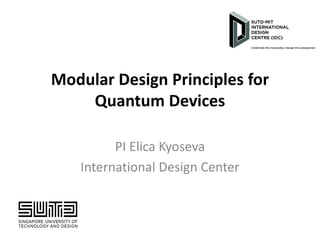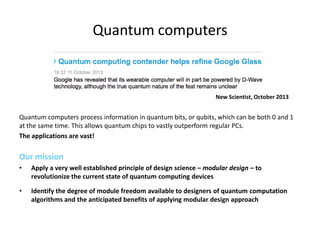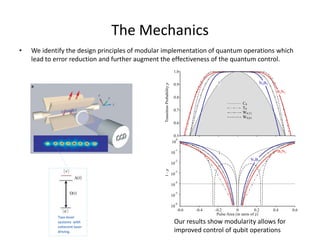Modular Design Principles for Quantum Devices
- 1. Modular Design Principles for Quantum Devices PI Elica Kyoseva International Design Center
- 2. Quantum computers New Scientist, October 2013 Quantum computers process information in quantum bits, or qubits, which can be both 0 and 1 at the same time. This allows quantum chips to vastly outperform regular PCs. The applications are vast! Our mission ŌĆó Apply a very well established principle of design science ŌĆō modular design ŌĆō to revolutionize the current state of quantum computing devices ŌĆó Identify the degree of module freedom available to designers of quantum computation algorithms and the anticipated benefits of applying modular design approach
- 3. The Mechanics We identify the design principles of modular implementation of quantum operations which lead to error reduction and further augment the effectiveness of the quantum control. Transition Probability p 1.0 1 0.9 N3B3 B3N3 0.8 C9 T9 W9,T1 W9,S1 0.7 0.6 0.5 0 10 10 10 1-p ŌĆó 10 10 10 10 -1 N3B3 -2 -3 -4 -5 -6 -0.6 Two-level systems with coherent laser driving. B3N3 1 -0.4 -0.2 0 0.2 Pulse Area (in units of p) 0.4 Our results show modularity allows for improved control of qubit operations 0.6



